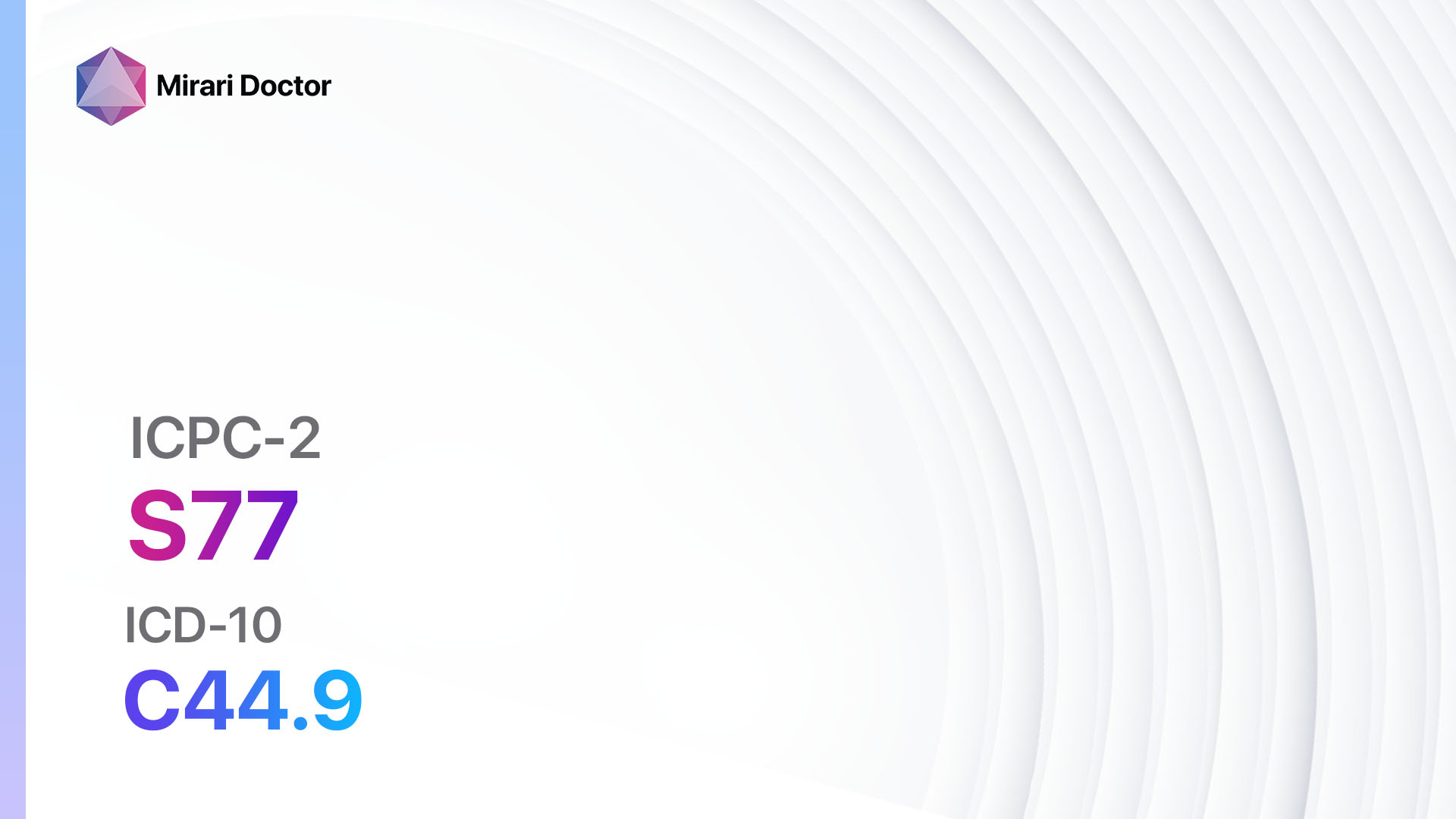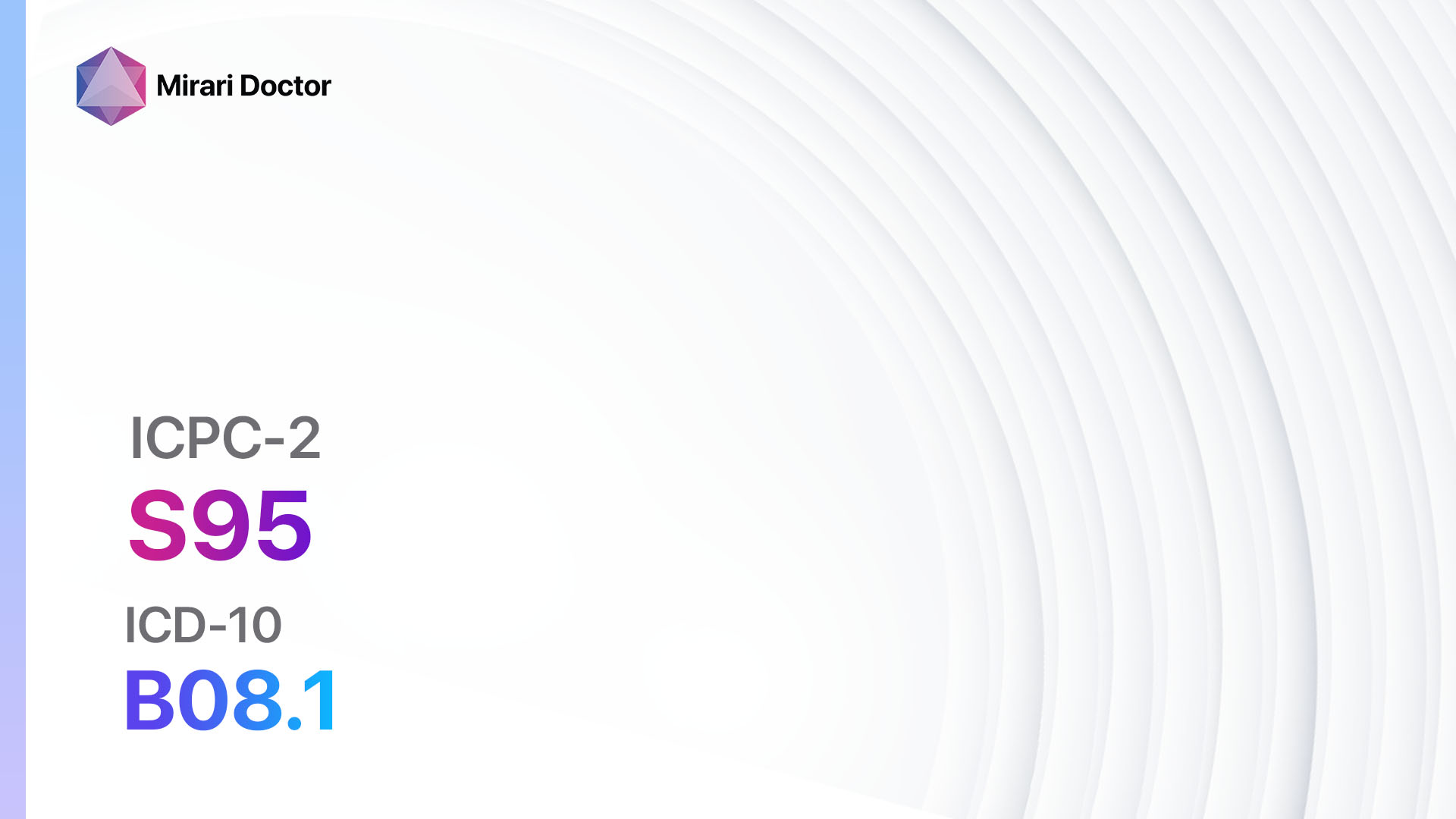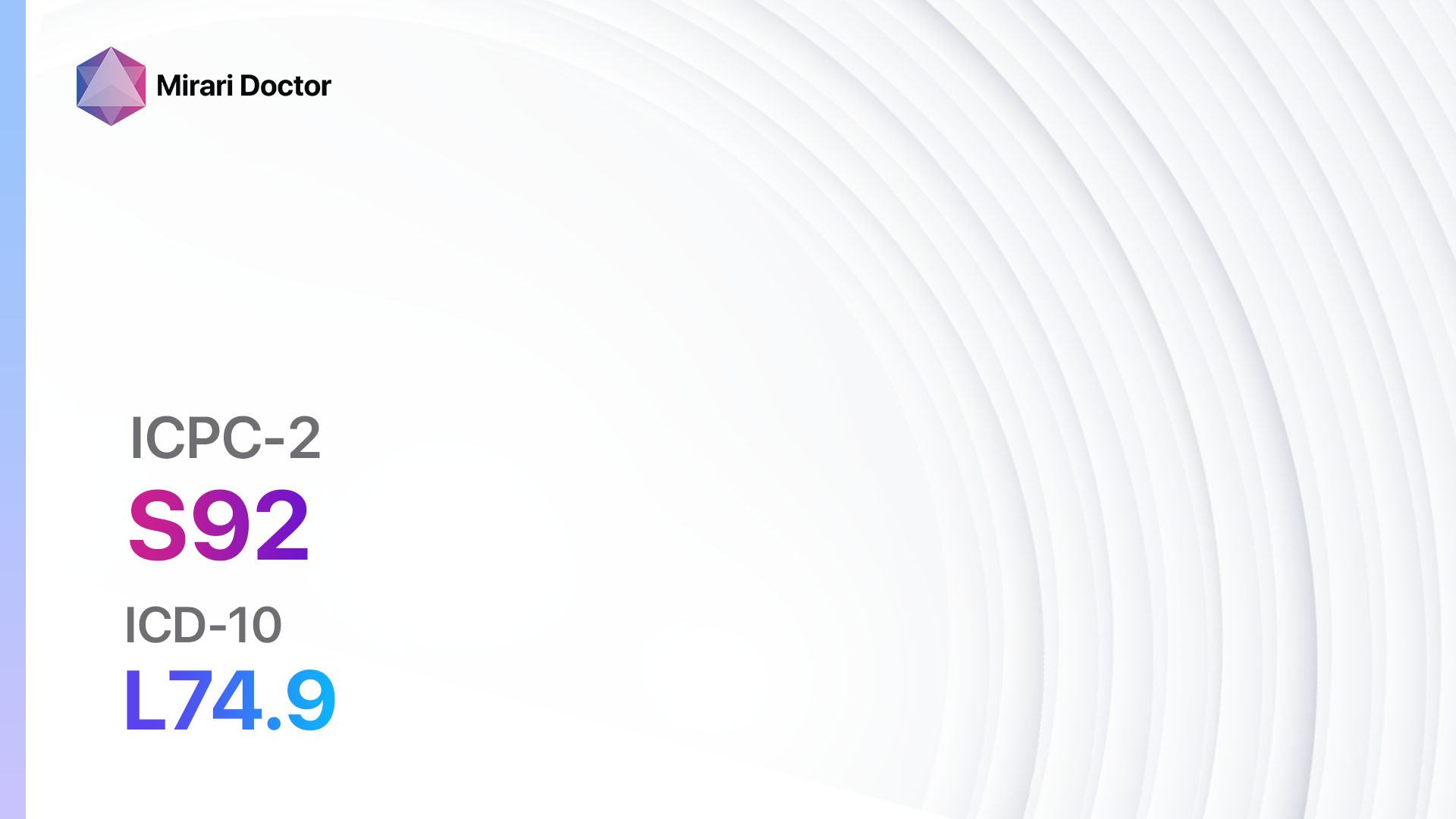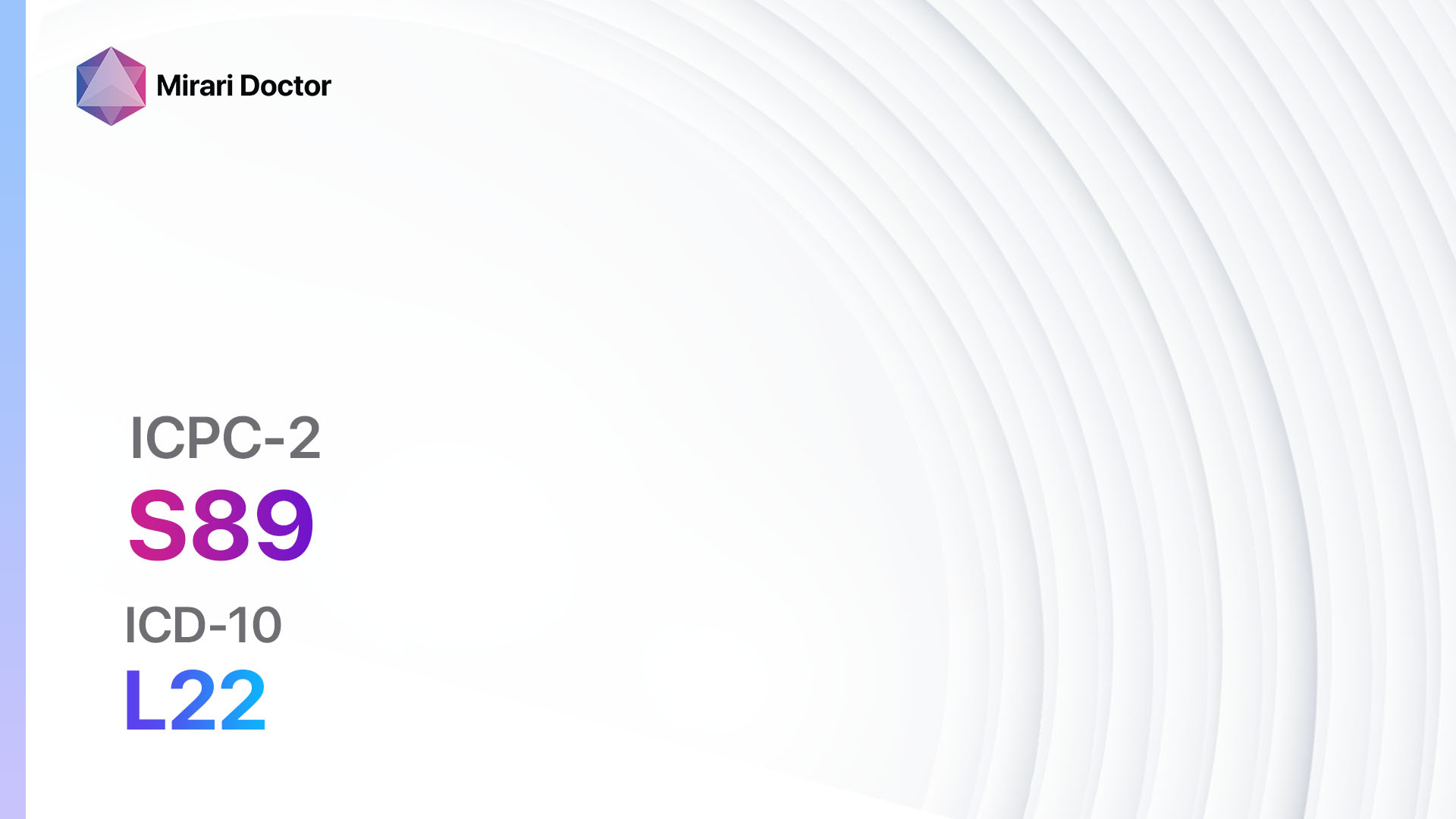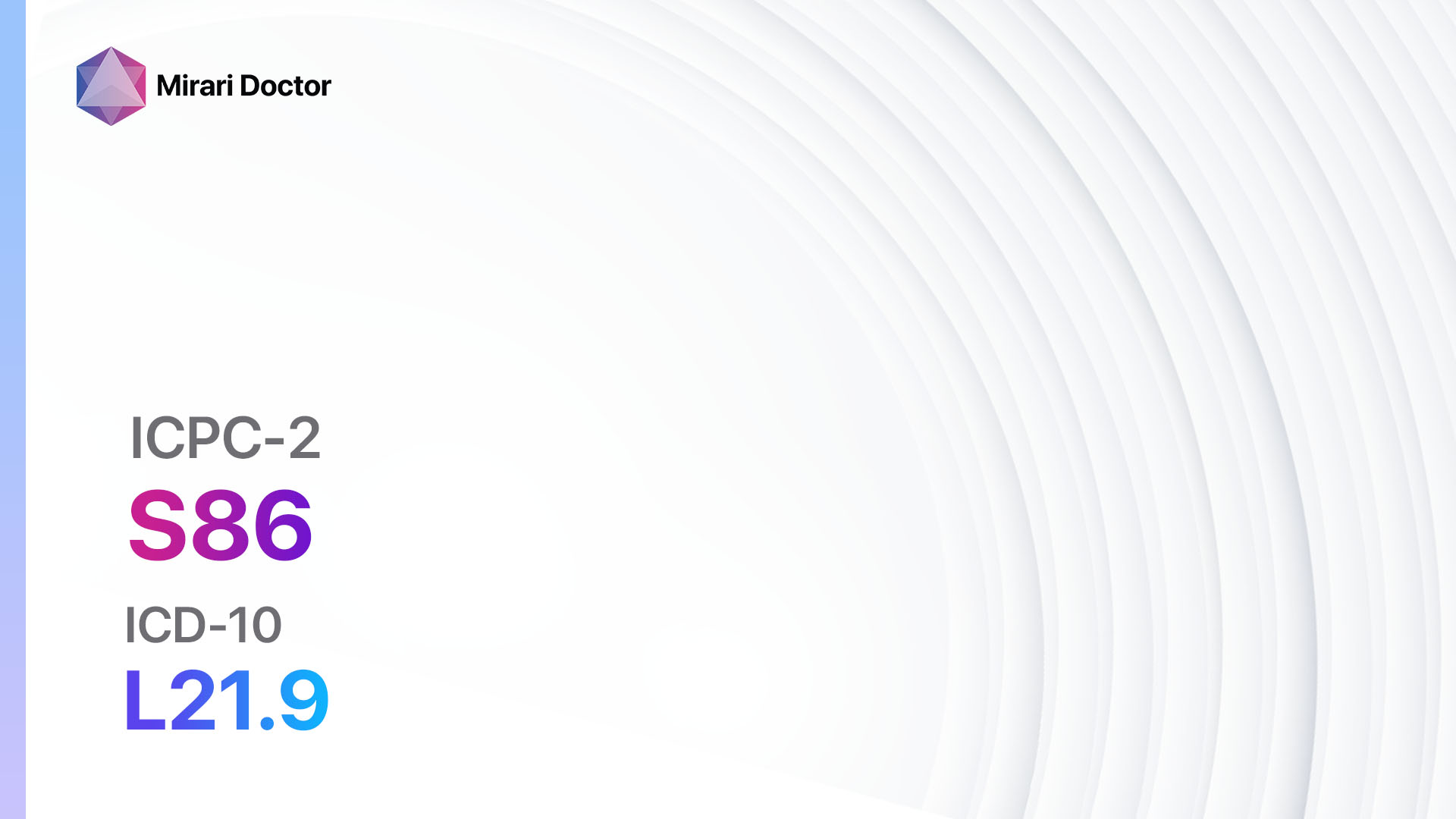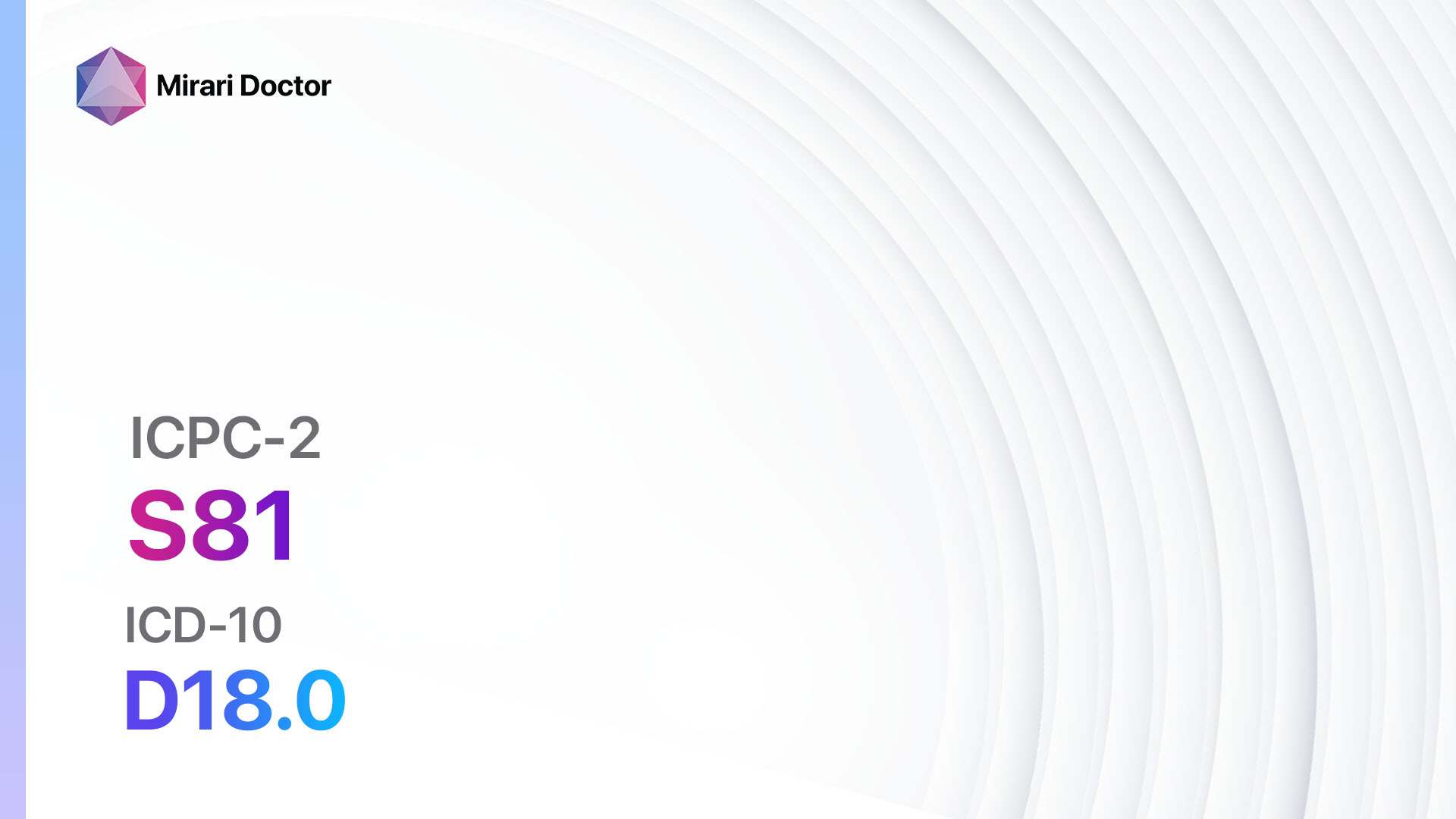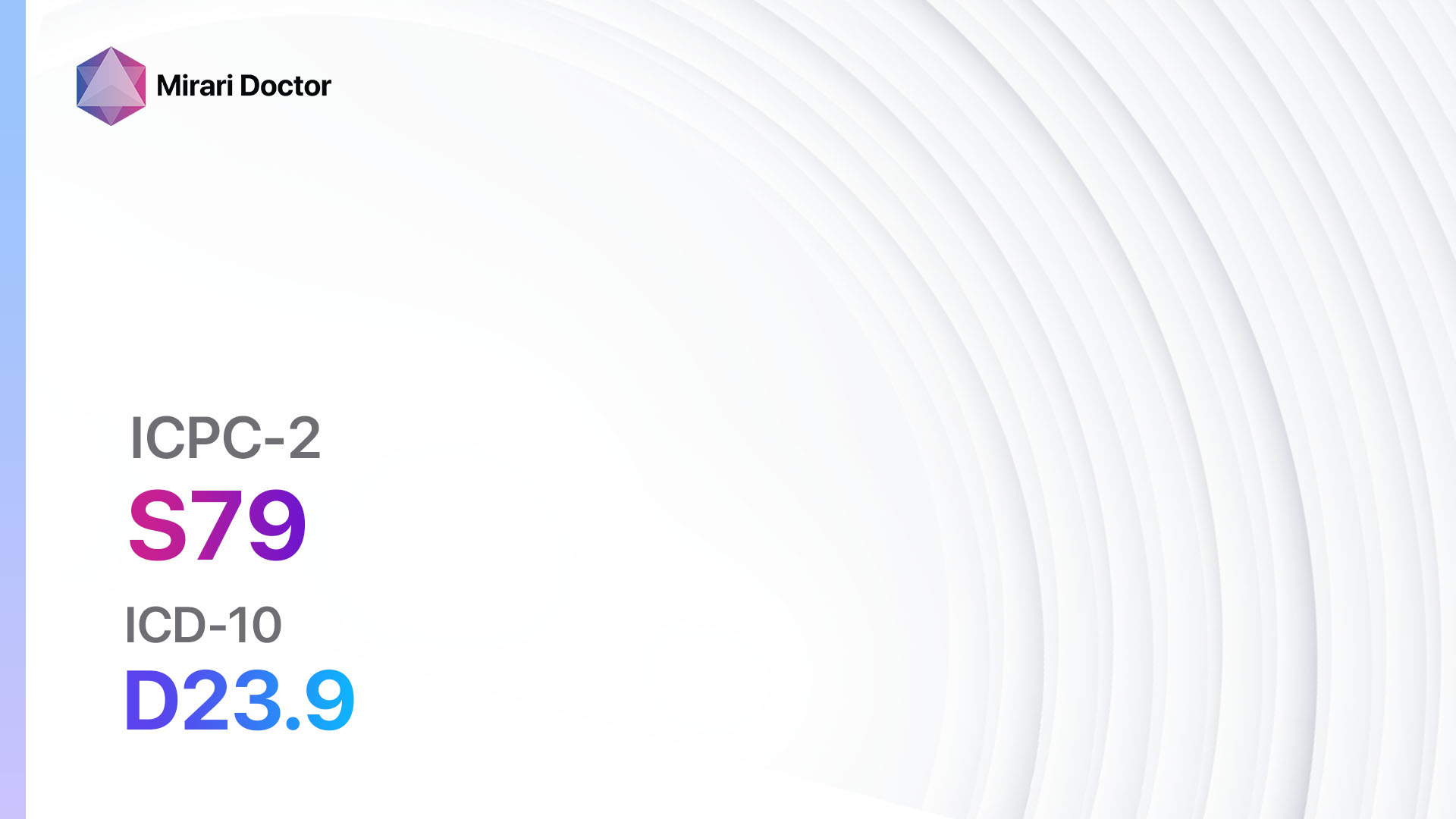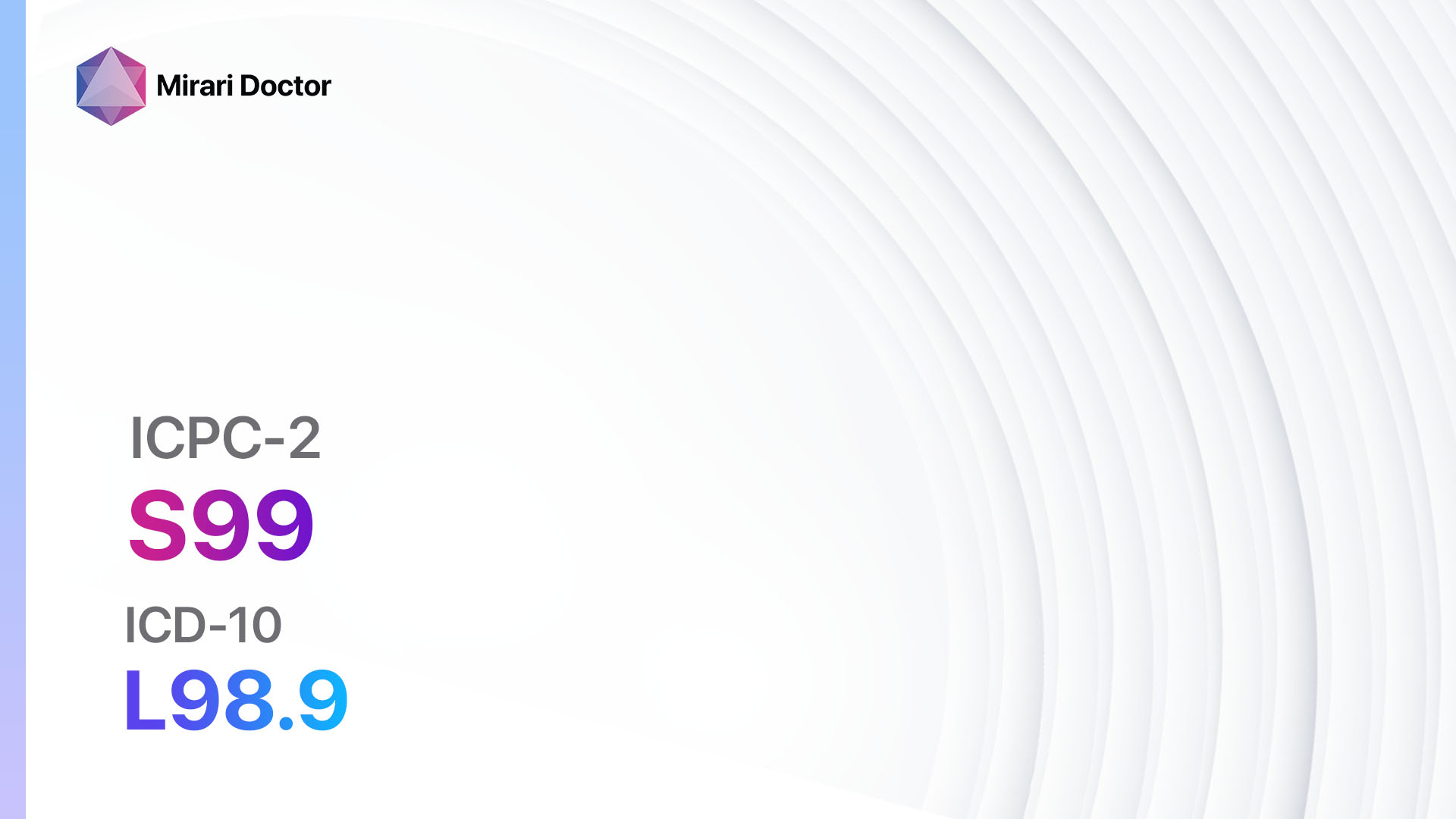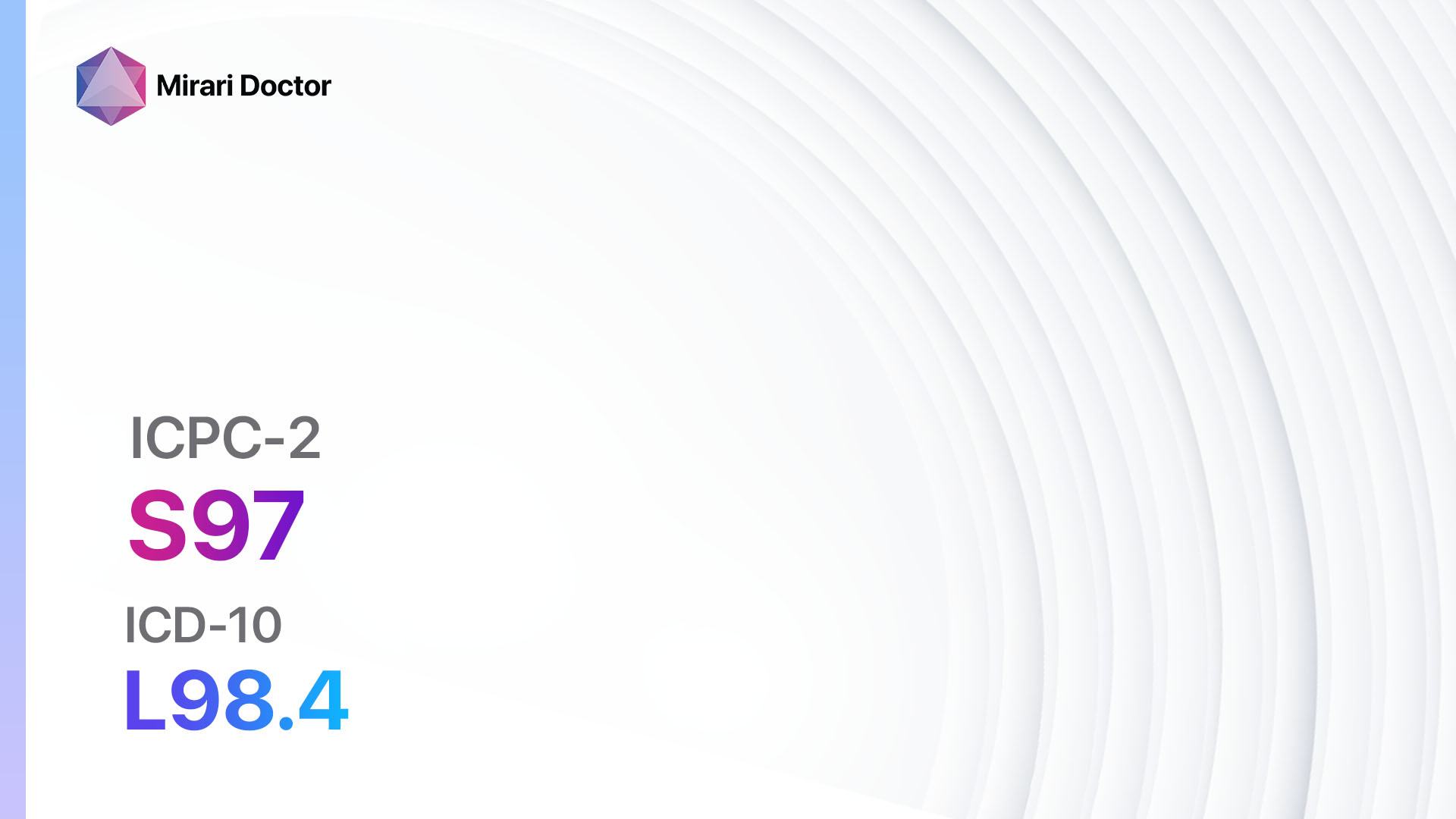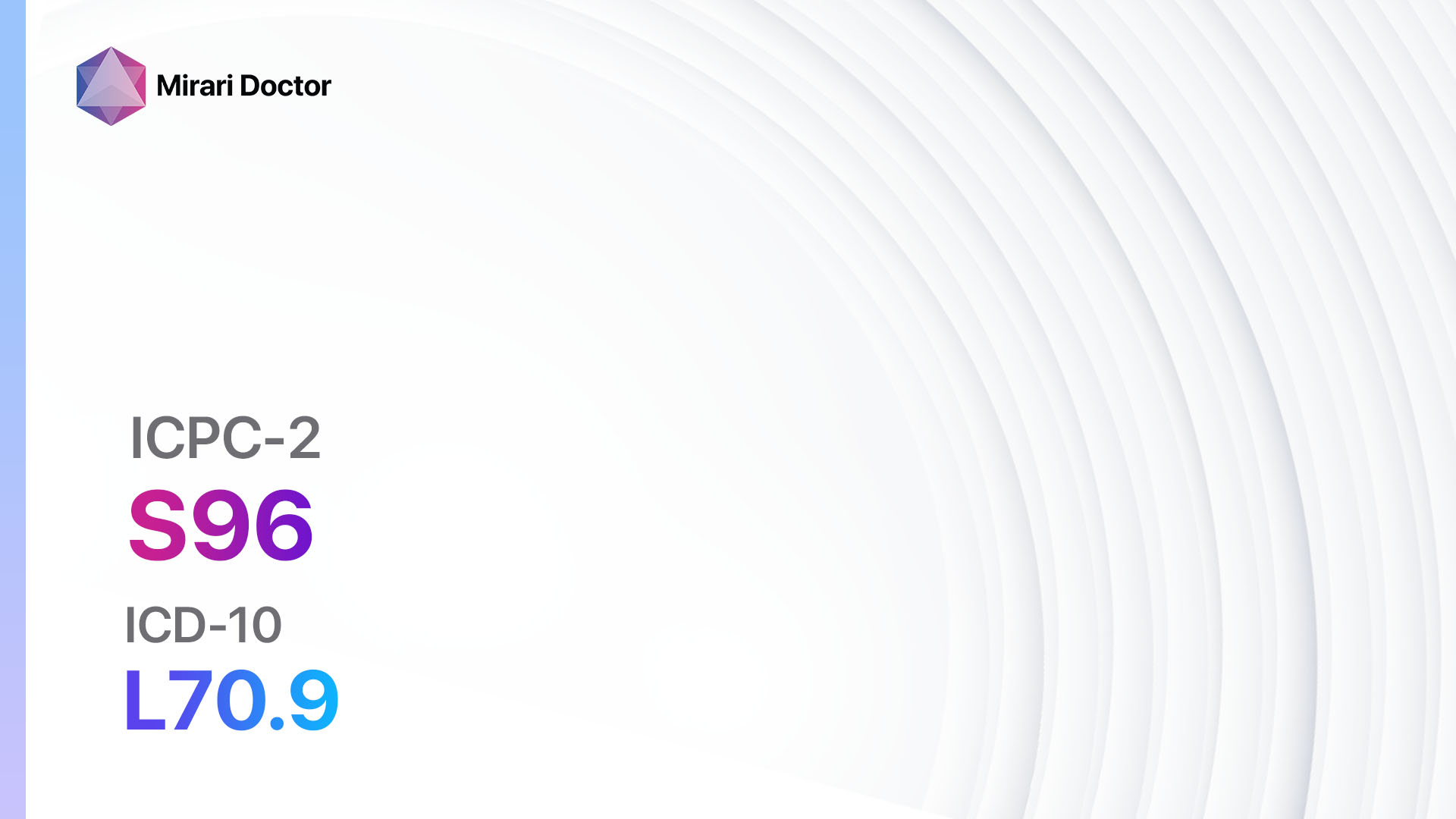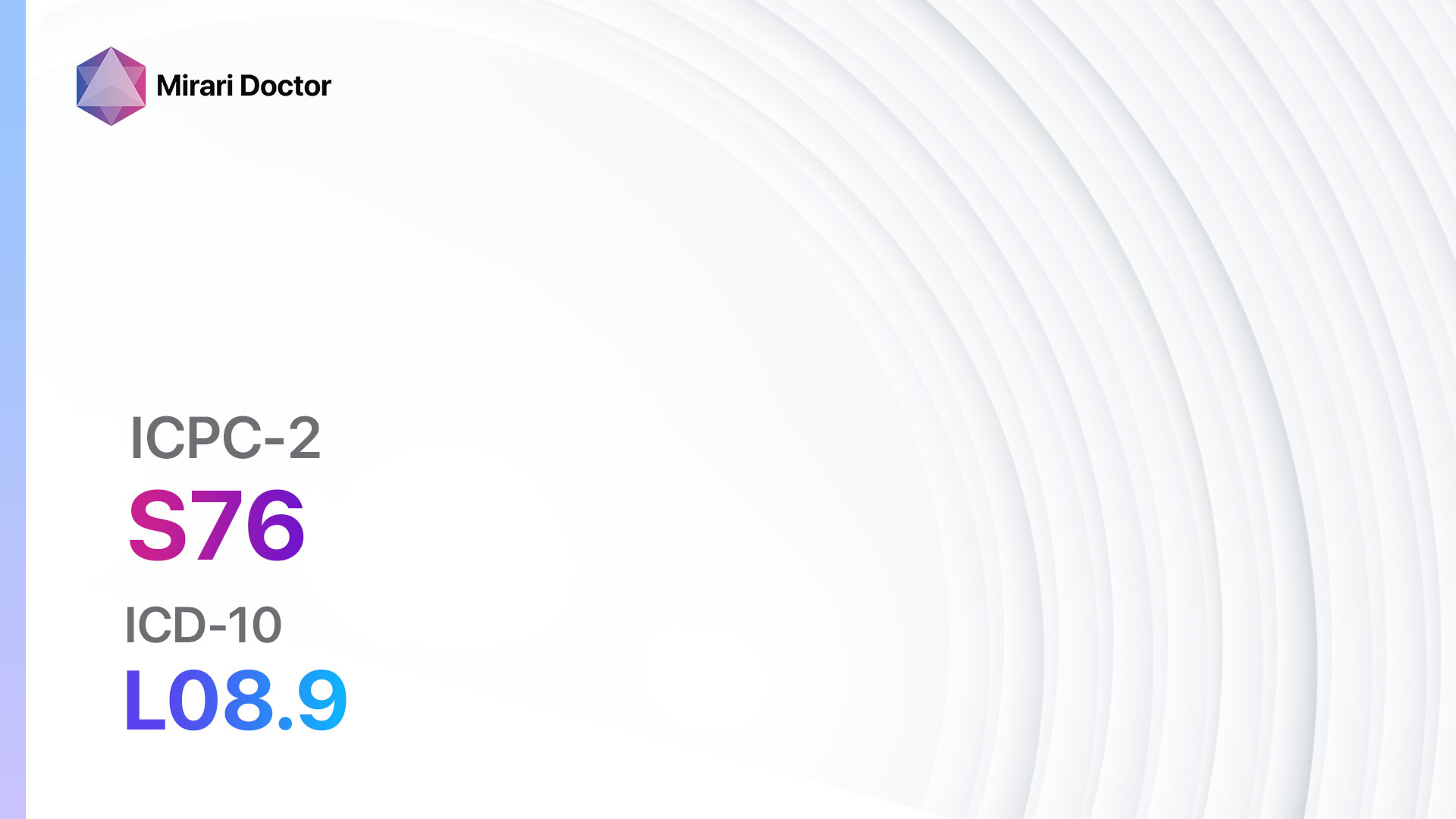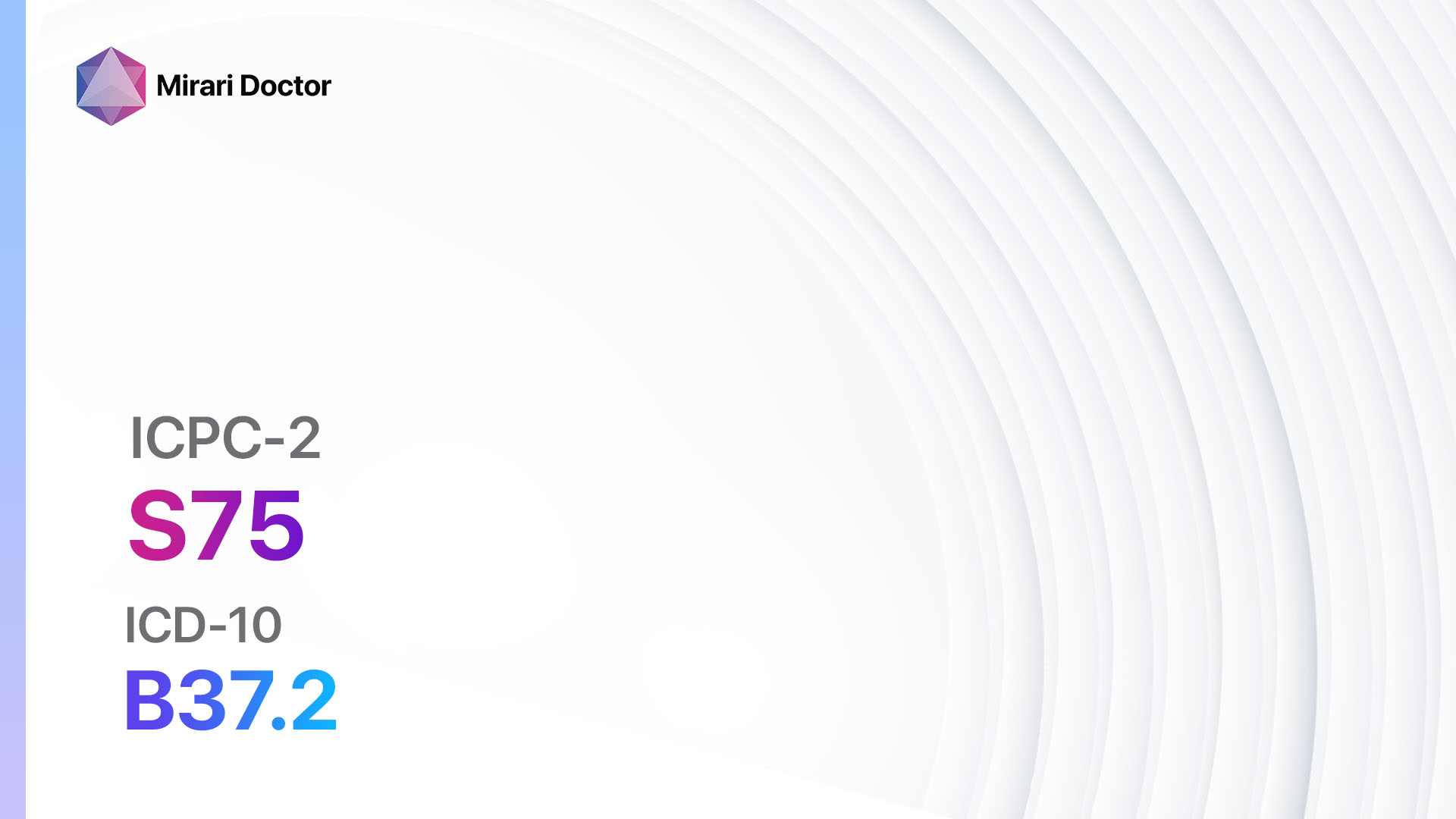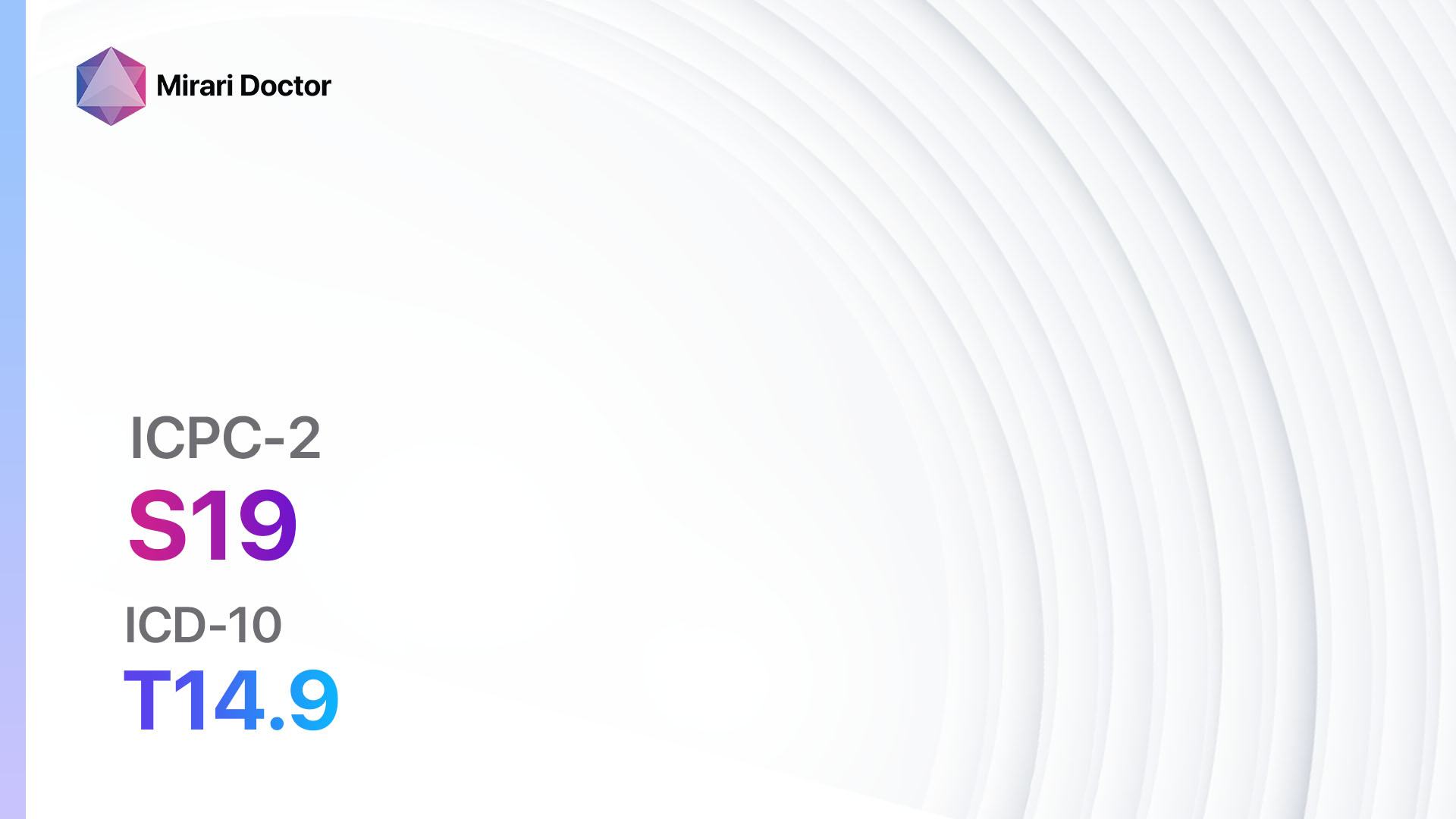
Introduction
Skin injuries can occur due to various causes, including trauma, burns, infections, or underlying medical conditions. These injuries can range from minor cuts and abrasions to more severe wounds that require medical intervention. This guide aims to provide healthcare professionals with a comprehensive approach to diagnosing and managing skin injuries other than those caused by trauma or burns.[1]
Codes
Symptoms
- Pain: Patients may experience localized pain at the site of the injury.[4]
- Redness: The affected area may appear red or inflamed.[4]
- Swelling: Swelling may be present around the injury.[4]
- Discharge: Depending on the severity of the injury, there may be a discharge of pus or fluid.[5]
- Odor: In some cases, an unpleasant odor may be present.[5]
Causes
- Infections: Skin injuries can be caused by bacterial, viral, or fungal infections.[6]
- Underlying medical conditions: Certain medical conditions, such as diabetes or peripheral vascular disease, can increase the risk of skin injuries.[7]
- Poor wound healing: Factors such as malnutrition or impaired immune function can lead to delayed wound healing and increased susceptibility to skin injuries.[8]
Diagnostic Steps
Medical History
- Gather information about the patient’s medical history, including any underlying medical conditions, previous skin injuries, or infections.[9]
- Ask about any medications the patient is currently taking, as certain medications can affect wound healing.[9]
- Inquire about the patient’s lifestyle and occupation, as these factors can contribute to the risk of skin injuries.[9]
Physical Examination
- Inspect the affected area for signs of redness, swelling, or discharge.[10]
- Assess the size and depth of the wound.[10]
- Palpate the area to determine tenderness or fluctuation.[10]
- Check for signs of infection, such as warmth, increased redness, or foul odor.[10]
Determine Severity
- Classify the skin injury based on severity and depth:
- Superficial: Involves only the top layer of the skin (epidermis).
- Partial thickness: Extends into the dermis but does not penetrate through it.
- Full thickness: Penetrates through the dermis and may involve underlying structures.
Laboratory Tests
- Complete blood count (CBC): To assess for signs of infection or inflammation.
- Wound culture: If there are signs of infection, a sample can be taken for culture and sensitivity testing.
- Blood glucose levels: To screen for diabetes or impaired glucose tolerance, which can affect wound healing.
Diagnostic Imaging
- X-ray: If there is a concern for underlying bone involvement or foreign bodies.
- Ultrasound: To assess the depth and extent of the injury, especially in cases of suspected tendon or ligament involvement.
- MRI: In complex cases or when soft tissue involvement is suspected.
Other Tests
- Biopsy: In cases where the cause of the skin injury is unclear or if there is suspicion of an underlying skin condition.
- Allergy testing: If an allergic reaction is suspected as the cause of the skin injury.
Follow-up and Patient Education
- Provide appropriate wound care instructions, including cleaning, dressing changes, and signs of infection.
- Schedule follow-up appointments to monitor wound healing and address any concerns.
- Educate the patient on the importance of maintaining good overall health, including proper nutrition and managing underlying medical conditions.
Possible Interventions
Traditional Interventions
Medications:
Top 5 drugs for Skin injury other:
- Antibiotics (e.g., Amoxicillin, Cephalexin):
- Cost: Generic versions can be $3-$50/month.
- Contraindications: Allergy to penicillin or cephalosporins.
- Side effects: Upset stomach, diarrhea.
- Severe side effects: Severe allergic reactions, Clostridium difficile infection.
- Drug interactions: Oral contraceptives, warfarin.
- Warning: Complete the full course of antibiotics as prescribed.
- Topical antimicrobial agents (e.g., Bacitracin, Neosporin):
- Cost: Over-the-counter products, typically less than $10.
- Contraindications: Allergy to the specific agent.
- Side effects: Local skin irritation or allergic reactions.
- Severe side effects: Rare, but can include severe allergic reactions.
- Drug interactions: None reported.
- Warning: Use as directed and avoid prolonged use to prevent antibiotic resistance.
- Steroids (e.g., Hydrocortisone):
- Cost: Over-the-counter products, typically less than $10.
- Contraindications: Active infection or allergy to the specific steroid.
- Side effects: Local skin thinning, increased risk of infection.
- Severe side effects: Rare, but can include systemic absorption and adrenal suppression.
- Drug interactions: None reported.
- Warning: Use as directed and avoid prolonged use on large areas of the body.
- Pain relievers (e.g., Acetaminophen, Ibuprofen):
- Cost: Over-the-counter products, typically less than $10.
- Contraindications: Allergy to the specific pain reliever or active gastrointestinal bleeding.
- Side effects: Upset stomach, potential for liver or kidney damage with long-term use.
- Severe side effects: Rare, but can include severe allergic reactions or gastrointestinal bleeding.
- Drug interactions: Other pain relievers, blood thinners.
- Warning: Follow the recommended dosage and duration of use.
- Tetanus vaccine:
- Cost: Typically covered by insurance or available at low cost through public health clinics.
- Contraindications: Severe allergic reaction to a previous dose of the vaccine.
- Side effects: Local pain or swelling at the injection site.
- Severe side effects: Rare, but can include severe allergic reactions.
- Drug interactions: None reported.
- Warning: Ensure up-to-date tetanus immunization status and consider booster doses as needed.
Alternative Drugs:
- Honey-based dressings: Can promote wound healing and have antimicrobial properties.
- Silver-based dressings: Have antimicrobial properties and can be used for infected wounds.
- Collagen dressings: Can promote wound healing and provide a moist environment for optimal healing.
- Growth factors: May be used in complex or non-healing wounds to stimulate tissue regeneration.
- Hyperbaric oxygen therapy: Can enhance wound healing by increasing oxygen delivery to tissues.
Surgical Procedures:
- Debridement: Removal of dead or infected tissue to promote wound healing.
- Skin grafting: Transplantation of healthy skin to cover the wound and promote healing.
- Wound closure: Suturing or stapling the wound edges together to facilitate healing.
Alternative Interventions
- Acupuncture: May help improve blood flow and reduce pain. Cost: $60-$120 per session.
- Chelation therapy: Controversial treatment involving the administration of chelating agents to remove heavy metals from the body. Cost: $75-$150 per session.
- Hyperbaric oxygen therapy: Involves breathing pure oxygen in a pressurized chamber to increase oxygen delivery to tissues. Cost: $200-$300 per session.
- Herbal supplements: Some herbs, such as aloe vera or calendula, may have potential benefits for wound healing. Cost: Varies depending on the specific supplement.
Lifestyle Interventions
- Proper wound care: Clean the wound with mild soap and water, apply an appropriate dressing, and change it regularly.
- Healthy diet: Ensure adequate intake of protein, vitamins, and minerals to support wound healing. Cost: Varies depending on dietary choices.
- Smoking cessation: Smoking impairs wound healing and increases the risk of complications. Cost: Varies depending on smoking cessation methods.
- Regular exercise: Promotes circulation and overall health, which can aid in wound healing. Cost: Varies depending on exercise preferences.
- Stress management: Chronic stress can delay wound healing, so implementing stress-reduction techniques may be beneficial. Cost: Varies depending on chosen methods.
It is important to note that the cost ranges provided are approximate and may vary depending on the location and availability of the interventions.
Mirari Cold Plasma Alternative Intervention
Understanding Mirari Cold Plasma
- Safe and Non-Invasive Treatment: Mirari Cold Plasma is a safe and non-invasive treatment option for various skin conditions. It does not require incisions, minimizing the risk of scarring, bleeding, or tissue damage.
- Efficient Extraction of Foreign Bodies: Mirari Cold Plasma facilitates the removal of foreign bodies from the skin by degrading and dissociating organic matter, allowing easier access and extraction.
- Pain Reduction and Comfort: Mirari Cold Plasma has a local analgesic effect, providing pain relief during the treatment, making it more comfortable for the patient.
- Reduced Risk of Infection: Mirari Cold Plasma has antimicrobial properties, effectively killing bacteria and reducing the risk of infection.
- Accelerated Healing and Minimal Scarring: Mirari Cold Plasma stimulates wound healing and tissue regeneration, reducing healing time and minimizing the formation of scars.
Mirari Cold Plasma Prescription
Video instructions for using Mirari Cold Plasma Device – S19 Skin injury other (ICD-10:T14.9)
| Mild | Moderate | Severe |
| Mode setting: 1 (Infection) Location: 0 (Localized) Morning: 15 minutes, Evening: 15 minutes |
Mode setting: 1 (Infection) Location: 0 (Localized) Morning: 30 minutes, Lunch: 30 minutes, Evening: 30 minutes |
Mode setting: 1 (Infection) Location: 0 (Localized) Morning: 30 minutes, Lunch: 30 minutes, Evening: 30 minutes |
| Mode setting: 2 (Wound Healing) Location: 0 (Localized) Morning: 15 minutes, Evening: 15 minutes |
Mode setting: 2 (Wound Healing) Location: 0 (Localized) Morning: 30 minutes, Lunch: 30 minutes, Evening: 30 minutes |
Mode setting: 2 (Wound Healing) Location: 0 (Localized) Morning: 30 minutes, Lunch: 30 minutes, Evening: 30 minutes |
| Total Morning: 30 minutes approx. $5 USD, Evening: 30 minutes approx. $5 USD |
Total Morning: 60 minutes approx. $10 USD, Lunch: 60 minutes approx. $10 USD, Evening: 60 minutes approx. $10 USD, |
Total Morning: 60 minutes approx. $10 USD, Lunch: 60 minutes approx. $10 USD, Evening: 60 minutes approx. $10 USD, |
| Usual treatment for 7-60 days approx. $70 USD – $600 USD | Usual treatment for 6-8 weeks approx. $1,260 USD – $1,680 USD |
Usual treatment for 3-6 months approx. $2,700 USD – $5,400 USD
|
 |
|
Use the Mirari Cold Plasma device to treat Skin injury other effectively.
WARNING: MIRARI COLD PLASMA IS DESIGNED FOR THE HUMAN BODY WITHOUT ANY ARTIFICIAL OR THIRD PARTY PRODUCTS. USE OF OTHER PRODUCTS IN COMBINATION WITH MIRARI COLD PLASMA MAY CAUSE UNPREDICTABLE EFFECTS, HARM OR INJURY. PLEASE CONSULT A MEDICAL PROFESSIONAL BEFORE COMBINING ANY OTHER PRODUCTS WITH USE OF MIRARI.
Step 1: Cleanse the Skin
- Start by cleaning the affected area of the skin with a gentle cleanser or mild soap and water. Gently pat the area dry with a clean towel.
Step 2: Prepare the Mirari Cold Plasma device
- Ensure that the Mirari Cold Plasma device is fully charged or has fresh batteries as per the manufacturer’s instructions. Make sure the device is clean and in good working condition.
- Switch on the Mirari device using the power button or by following the specific instructions provided with the device.
- Some Mirari devices may have adjustable settings for intensity or treatment duration. Follow the manufacturer’s instructions to select the appropriate settings based on your needs and the recommended guidelines.
Step 3: Apply the Device
- Place the Mirari device in direct contact with the affected area of the skin. Gently glide or hold the device over the skin surface, ensuring even coverage of the area experiencing.
- Slowly move the Mirari device in a circular motion or follow a specific pattern as indicated in the user manual. This helps ensure thorough treatment coverage.
Step 4: Monitor and Assess:
- Keep track of your progress and evaluate the effectiveness of the Mirari device in managing your Skin injury other. If you have any concerns or notice any adverse reactions, consult with your health care professional.
Note
This guide is for informational purposes only and should not replace the advice of a medical professional. Always consult with your healthcare provider or a qualified medical professional for personal advice, diagnosis, or treatment. Do not solely rely on the information presented here for decisions about your health. Use of this information is at your own risk. The authors of this guide, nor any associated entities or platforms, are not responsible for any potential adverse effects or outcomes based on the content.
Mirari Cold Plasma System Disclaimer
- Purpose: The Mirari Cold Plasma System is a Class 2 medical device designed for use by trained healthcare professionals. It is registered for use in Thailand and Vietnam. It is not intended for use outside of these locations.
- Informational Use: The content and information provided with the device are for educational and informational purposes only. They are not a substitute for professional medical advice or care.
- Variable Outcomes: While the device is approved for specific uses, individual outcomes can differ. We do not assert or guarantee specific medical outcomes.
- Consultation: Prior to utilizing the device or making decisions based on its content, it is essential to consult with a Certified Mirari Tele-Therapist and your medical healthcare provider regarding specific protocols.
- Liability: By using this device, users are acknowledging and accepting all potential risks. Neither the manufacturer nor the distributor will be held accountable for any adverse reactions, injuries, or damages stemming from its use.
- Geographical Availability: This device has received approval for designated purposes by the Thai and Vietnam FDA. As of now, outside of Thailand and Vietnam, the Mirari Cold Plasma System is not available for purchase or use.
References
- Skin Injury – Seattle Children’s. (n.d.). Retrieved from https://www.seattlechildrens.org/conditions/a-z/skin-injury/
- ICPC-2 Codes – RxReasoner. (n.d.). Retrieved from https://www.rxreasoner.com/icpc2codes/component/T
- ICD-10 code: T14.9 Injury, unspecified – gesund.bund.de. (n.d.). Retrieved from https://gesund.bund.de/en/icd-code-search/t14-9
- Skin Injuries | Children’s Hospital Colorado. (n.d.). Retrieved from https://www.childrenscolorado.org/conditions-and-advice/conditions-and-symptoms/symptoms/cut-scrape-or-bruise/
- Skin Disorders: Pictures, Causes, Symptoms, and Treatment. (n.d.). Retrieved from https://www.healthline.com/health/skin-disorders
- Skin Diseases: Types of, Symptoms, Treatment & Prevention. (n.d.). Retrieved from https://my.clevelandclinic.org/health/diseases/21573-skin-diseases
- SkinInjuries_SO – Student Health and Wellness Services. (n.d.). Retrieved from https://health.williams.edu/files/StudentOnline/SkinInjuries_SO.html
- Skin Injury – symptomviewer – HealthyChildren.org. (n.d.). Retrieved from https://www.healthychildren.org/English/tips-tools/symptom-checker/Pages/symptomviewer.aspx?symptom=Skin+Injury
- Keese, Charles R. ; Wegener, Joachim ; Walker, Sarah R. ; Giaever, Ivar (2004.0). Electrical Wound-Healing Assay for Cells in vitro. DOI: 10.1073/pnas.0307588100
- Svensjö, T ; Pomahac, B ; Yao, F ; Slama, J ; Eriksson, E (2000.0). Accelerated Healing of Full-Thickness Skin Wounds in a Wet Environment. DOI: 10.1073/pnas.0307588100
Related articles
Made in USA



